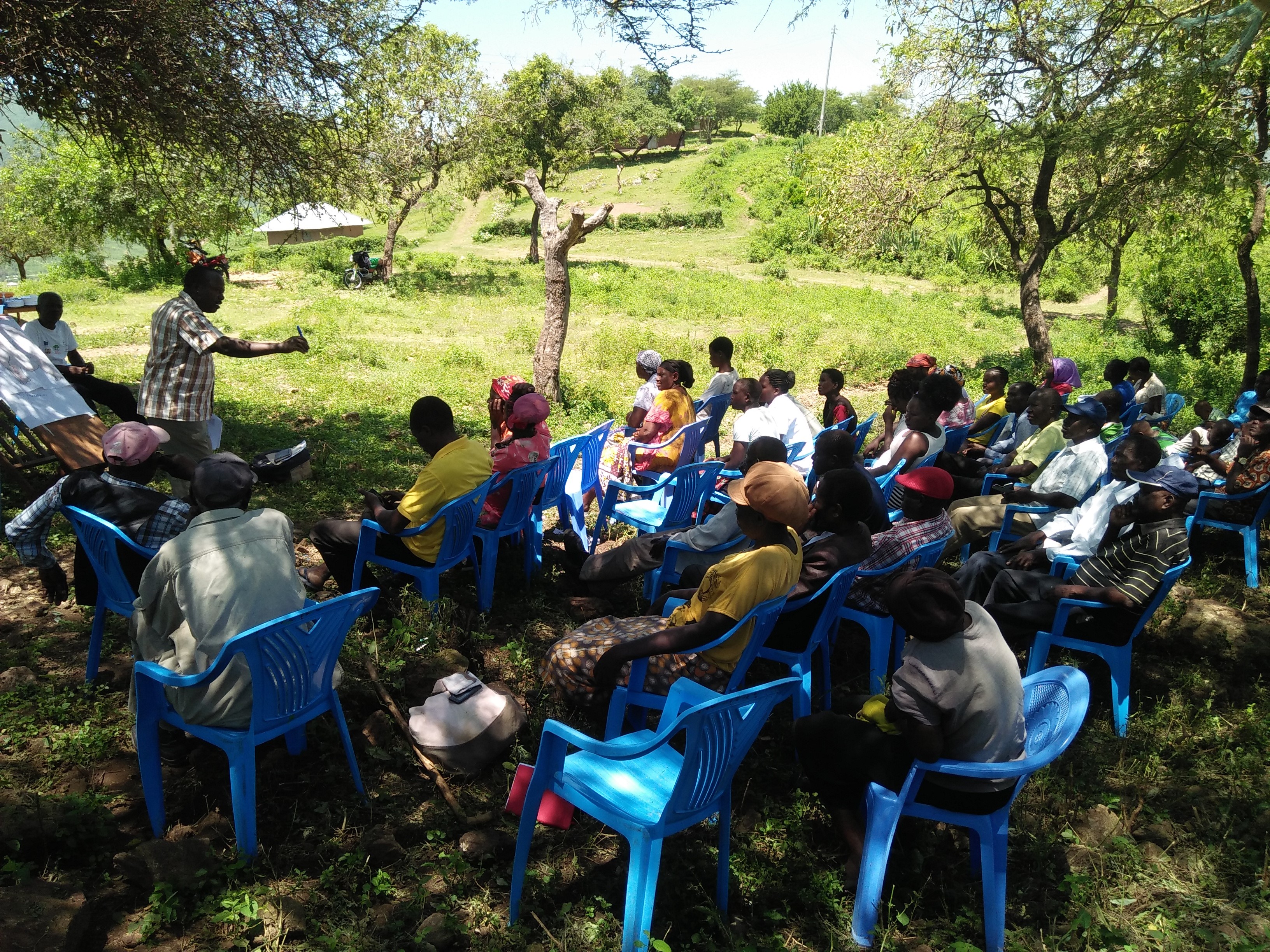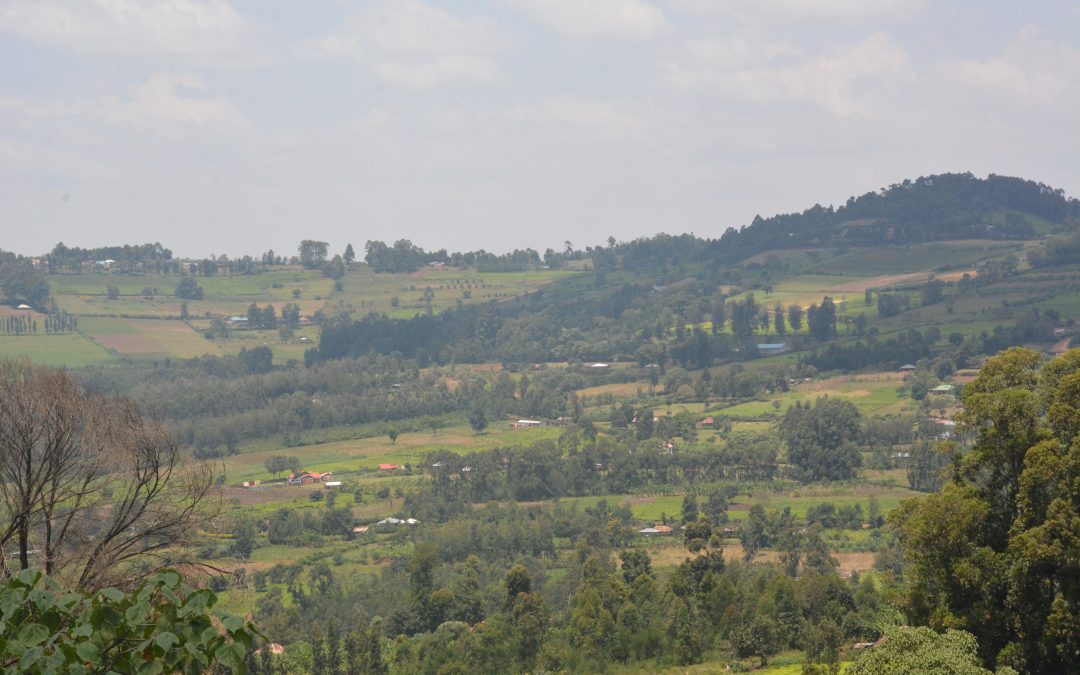By Tengetile Zanele Mphila-Nguru
Seeking national unity to restore the vast areas of degraded dryland, a unique coalition has formed.
‘The President has committed the country to achieving 10% tree cover on all agricultural land,’ said Chief Administrative Secretary Hon. Mohammed Elmi of Kenya’s Ministry of Environment and Forestry. ‘The President has also reaffirmed the commitment of restoring 5.1 million hectares under the Bonn Challenge.’
To catalyse the large-scale restoration movement needed to realise these impressive ambitions, the Center for International Forestry Research and World Agroforestry (ICRAF), through Regreening Africa brought together major players in land restoration in the region to establish a coordinated work plan (listen in to the proceedings).
‘The overall aim of this conference is to build on what has already been started in the country on landscape restoration, create a platform for coordinating different actors, generating a national-wide momentum that is led from bottom–up and supported from top–down,’ said Susan Chomba, leader of Regreening Africa.

Farmers in Musare village, Homa Bay County, participating in a training on various restoration approaches. Photo: Tom Nyongesa, World Vision Kenya
Together with partners, World Vision Kenya, Kenya Forestry Research Institute, Kenya Forest Service, World Resources Institute, Food and Agriculture Organization of the United Nations and the Global EverGreening Alliance, the conference took the form of a webinar on 3 December 2020.
More than 200 participants and panellists joined from the comfort of their homes, vehicles or offices, including Hon. Elmi and the Permanent Secretary of the Ministry of Agriculture, Fisheries and Cooperatives, Prof.
Hon. Elmi emphasized that work in Kenya’s 47 counties needed to be well coordinated because that is where the restoration takes place. He also challenged everyone to include the arid and semi-arid areas of the country and not only focus on those areas more easily accessible.
On that point, the Chief Conservator of Forests and head of Kenya Forest Service, Julius Kamau, noted that the Service with support from FAO, Global Environment Facility and others was coordinating a multi-stakeholder process to develop a five-year forest and landscape restoration, implementation and action plan (2021–2025).
‘Its aim is to put Kenya’s deforested and degraded lands under restoration while contributing to national development goals and restoration targets,’ he said.
Most of the speakers emphasized the need for working together to realize the goals of the conference. Patrick Mugi from FAO called for a multi-agency monitoring taskforce led by an appropriate government agency and supported by other partners, to ensure credible monitoring and reporting of national targets.
Senior Deputy Director Jane Njuguna of the Kenya Forestry Research Institute noted that the Institute is already developing technologies, such as mobile applications, to track the 10% tree-cover target, as well as other technologies to assist with the restoration of degraded forests, wetlands and riparian ecosystems.
These kinds of ambitious commitments and hard work, even if well-coordinated and clever, need financial support, something that the European Union has always been strong in providing.
‘This conference happens at a crucial time,’ noted Myra Bernardi, Head of Rural Development and Food Security for the European Union delegation to Kenya, ‘during a global pandemic that requires pursuing of innovations to build back better. The EU will continue building on its strong partnership with Kenya and, especially, with the Ministry of Environment and Forestry, its lead agencies, and partner organizations like ICRAF, World Vision and World Resources Institute to tackle climate change, conserve biodiversity and innovate to sustain in a balanced manner the productivity of Kenya’s natural capital.’
James Ang’awa, director of Program Development and Quality Assurance for World Vision Kenya, agreed with the need for a joint effort and also emphasized the need to look beyond ‘tree planting’ to integrating other restoration practices, such as farmer-managed natural regeneration, especially given the latter’s widespread success throughout the drylands of Africa.

Tony Rinaudo, Senior Climate Action Advisor, World Vision Australia, demonstrating FMNR techniques to farmers from Marsabit County, Kenya. Photo: World Vision Kenya
Such successful restoration work was showcased by the Ministry of Agriculture. The Kalacha Irrigation Scheme in Marsabit County, which is a few kilometres from the Chalbi Desert, was started in 1984 with an area of only 20 acres or 8 hectares. Nowadays, the Scheme has been expanded to cover 200 acres or 80 hectares. It directly benefits 315 farmers and supplies water for irrigation, allowing the farmers to harvest 1900 bales of hay valued at KSH 950 000 (approximately USD 8600).
‘We need to get more local stakeholders involved in land restoration,’ said Permanent Secretary Boga, inspired by the proceedings. ‘In particular, we must focus on investments in, and the involvement of, youths and school children.’
Elizabeth Wathuti, the head of Campaigns at the Wangari Maathai Foundation and also founder of the Green Generation Initiative, passionately agreed with the Secretary.
‘We need meaningful engagement of youth in restoration,’ she said. ‘There is an urgent need to help young people unleash their creativity and innovations in addressing degradation and also recognizing them as stakeholders throughout the landscape restoration processes.’
Tony Rinaudo, the famous ‘forest maker’ of World Vision, praised Kenya for this gathering of committed people who were devoted to making Kenya green gain. He encouraged the Government and all involved to keep doing the great work they were doing in restoration.
Dennis Garrity, former director-general of ICRAF, United Nations Ambassador for the Drylands and chair of the Global EverGreening Alliance, challenged Kenya to seize the day and become a model for landscape restoration by creating a truly national movement.
‘The efforts of the millions of farmers who have established trees on their farms must be supported and their neighbours encouraged to mimic them,’ he said. ‘They are the true heroes of restoration in Kenya and beyond.’
Other webinars covering different topics, such as meaningful youth engagement in landscape restoration, county government engagement, private sector engagement, monitoring and evaluation will follow in 2021, culminating in a final National Land Restoration Conference in mid-2021 when the UN Decade of Ecosystem Restoration will be officially launched.
About Regreening Africa
Regreening Africa is an ambitious five-year project funded by the European Union that seeks to reverse land degradation among 500,000 households, and across 1 million hectares in eight countries in Sub-Saharan Africa. By incorporating trees into croplands, communal lands and pastoral areas, regreening efforts make it possible to reclaim Africa’s degraded landscapes.
This story was produced with the financial support of the European Union. Its contents are the sole responsibility of Regreening Africa and do not necessarily reflect the views of the European Union.

